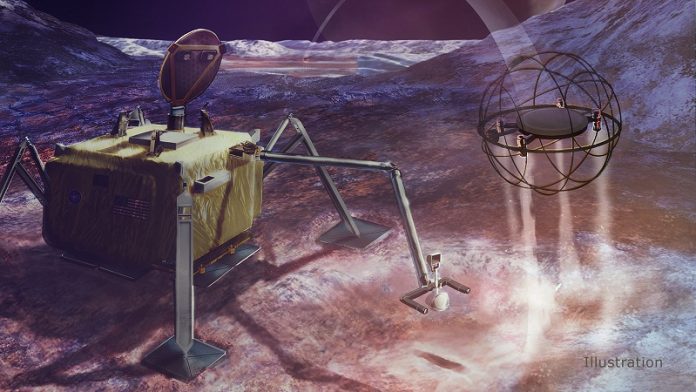
Imagine a robot that moves by hopping around like a frog.
NASA is working on just such a robot, called SPARROW, which could help us explore the icy moons of Jupiter and Saturn.
These moons, like Europa and Enceladus, have thick ice surfaces and possibly oceans of salty water underneath. But their rough and unknown terrains make it hard for most robots to move around.
SPARROW stands for Steam Propelled Autonomous Retrieval Robot for Ocean Worlds. It’s about the size of a soccer ball and has thrusters, navigation tools, and scientific instruments inside a strong, protective shell.
Instead of using traditional rocket fuel, SPARROW uses steam. The robot would melt ice on the moon’s surface to create steam, which it uses to hop through the air.
The low gravity on these moons means there’s no air resistance, so SPARROW could make long jumps over many miles of difficult terrain.
Gareth Meirion-Griffith, a roboticist at NASA’s Jet Propulsion Laboratory (JPL) in California, leads the SPARROW project.
He explains that Europa’s terrain is probably very complex, with crevasses and tall ice formations called penitentes.
These obstacles would be tough for most robots, but SPARROW’s ability to hop gives it total freedom to move around.
SPARROW would work from a lander, which would act as its home base. The lander would gather and melt ice, then load the water into SPARROW. The robot would heat the water to create steam and hop off the surface.
When it needs more fuel, SPARROW would return to the lander, where it could also drop off any scientific samples it collected.
NASA is considering sending multiple SPARROW robots to explore a single area or spread out to cover more ground. In 2018, SPARROW received Phase I funding from NASA’s Innovative Advanced Concepts (NIAC) program, which supports futuristic ideas for space exploration.
This funding allowed the team to develop and test different steam propulsion systems and use computer simulations to understand how SPARROW would land on the icy terrain.
The research showed that one long hop is more efficient than several smaller ones. This and other calculations helped the team figure out the best angles and speeds for SPARROW’s jumps.
NASA’s Space Technology Mission Directorate funds NIAC and focuses on developing new technologies for space exploration. SPARROW’s innovative design could one day help us learn more about the mysterious, icy moons of our solar system.



